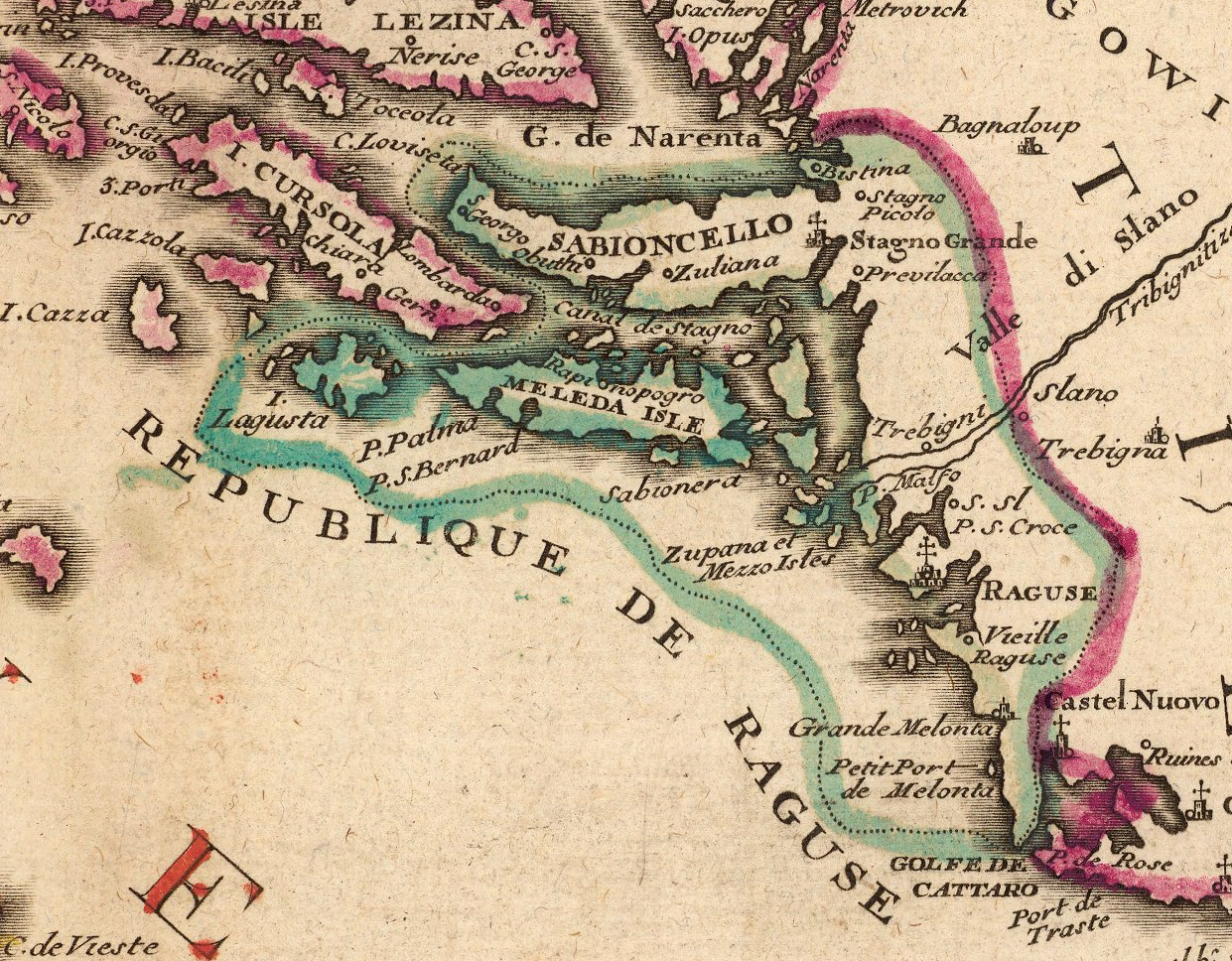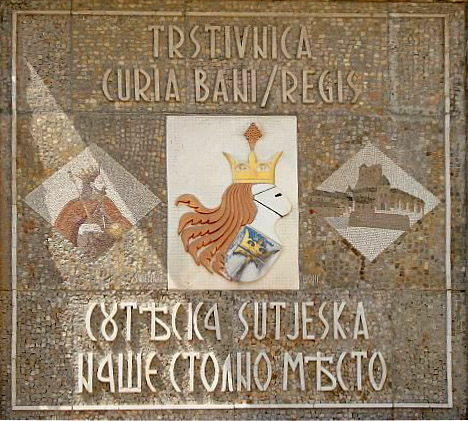|
Pejačević Family
The House of Pejačević or Pejácsevich, is an old Croatian nobility, noble family, remarkable during the period in history marked by the Ottoman wars in Europe, Ottoman war in the Kingdom of Croatia and Austro-Hungarian Empire respectively. Notable members of the family were politicians, clerics, artists, senior military officers, Bans of Croatia, Bans (viceroys) of Croatia and other high state officials. They were very potent and influential in the political, social, economic and cultural life of the country, and especially distinguished in the region of Slavonia. Family origin The origin of the family dates back to the 14th-century territory of southeastern Kingdom of Croatia (medieval), Croatia and the neighbouring History of Bosnia and Herzegovina, medieval Bosnia and Herzegovina. There are sources that connect the ancestors of the family with the Bosnian king Stephen Dabiša of Bosnia, Stjepan Dabiša (English: ''Stephen Dabisha''), who ruled from 1391 to 1395, and his so ... [...More Info...] [...Related Items...] OR: [Wikipedia] [Google] [Baidu] |
Republic Of Ragusa
The Republic of Ragusa, or the Republic of Dubrovnik, was an maritime republics, aristocratic maritime republic centered on the city of Dubrovnik (''Ragusa'' in Italian and Latin; ''Raguxa'' in Venetian) in South Dalmatia (today in southernmost Croatia) that carried that name from 1358 until 1808. It reached its commercial peak in the 15th and the 16th centuries, before being conquered by Napoleon's First French Empire, French Empire and formally annexed by the Kingdom of Italy (Napoleonic), Napoleonic Kingdom of Italy in 1808. It had a population of about 30,000 people, of whom 5,000 lived within the city walls. Its motto was "'", a Latin phrase which can be translated as "Liberty is not well sold for all the gold". Names Originally named ' (Latin for "Ragusan municipality" or "community"), in the 14th century it was renamed ' (Latin for ''Ragusan Republic''), first mentioned in 1385. It was nevertheless a Republic under its previous name, although its Rector was appointed b ... [...More Info...] [...Related Items...] OR: [Wikipedia] [Google] [Baidu] |
Ottoman Empire
The Ottoman Empire (), also called the Turkish Empire, was an empire, imperial realm that controlled much of Southeast Europe, West Asia, and North Africa from the 14th to early 20th centuries; it also controlled parts of southeastern Central Europe, between the early 16th and early 18th centuries. The empire emerged from a Anatolian beyliks, ''beylik'', or principality, founded in northwestern Anatolia in by the Turkoman (ethnonym), Turkoman tribal leader Osman I. His successors Ottoman wars in Europe, conquered much of Anatolia and expanded into the Balkans by the mid-14th century, transforming their petty kingdom into a transcontinental empire. The Ottomans ended the Byzantine Empire with the Fall of Constantinople, conquest of Constantinople in 1453 by Mehmed II. With its capital at History of Istanbul#Ottoman Empire, Constantinople (modern-day Istanbul) and control over a significant portion of the Mediterranean Basin, the Ottoman Empire was at the centre of interacti ... [...More Info...] [...Related Items...] OR: [Wikipedia] [Google] [Baidu] |
Mount Alverno (Italy)
Mount is often used as part of the name of specific mountains, e.g. Mount Everest. Mount or Mounts may also refer to: Places * Mount, Cornwall, a village in Warleggan parish, England * Mount, Perranzabuloe, a hamlet in Perranzabuloe parish, Cornwall, England People * Mount (surname) * William L. Mounts (1862–1929), American lawyer and politician Computing and software * Mount (computing), the process of making a file system accessible * Mount (Unix), the utility in Unix-like operating systems which mounts file systems Books * ''Mount!'', a 2016 novel by Jilly Cooper Displays and equipment * Mount, a fixed point for attaching equipment, such as a hardpoint on an airframe * Mounting board, in picture framing * Mount, a hanging scroll for mounting paintings * Mount, to display an item on a heavy backing such as foamcore, e.g.: ** To pin a biological specimen, on a heavy backing in a stretched stable position for ease of dissection or display ** To prepare dead animal ... [...More Info...] [...Related Items...] OR: [Wikipedia] [Google] [Baidu] |
Medieval Bosnia
The history of Bosnia and Herzegovina in the Middle Ages refers to the time period between the Roman era and the 15th-century Ottoman conquest. The Early Middle Ages in the Western Balkans saw the region reconquered from barbarians (Ostrogoths) by the Byzantine Emperor Justinian I (), followed by raids and migrations carried out by Slavic peoples in the 6th and 7th centuries. The first mention of a distinct Bosnian region comes from the 10th-century Byzantine text ''De Administrando Imperio''. By the late 9th and early 10th century, Latin priests had Christianized much of Bosnia, with some areas remaining unconverted. In the High Middle Ages, Bosnia experienced economic stability and peace under the Ban Kulin who ruled over Banate of Bosnia from 1180 to 1204 and strengthened its ties with the Republic of Ragusa and with Venice. The Kingdom of Bosnia emerged in the Late Middle Ages (1377). The kingdom faced internal and external conflicts, eventually falling under Ottoman r ... [...More Info...] [...Related Items...] OR: [Wikipedia] [Google] [Baidu] |
Faculty Of Philosophy In Zagreb
The Faculty of Humanities and Social Sciences or the Faculty of Philosophy in Zagreb ( Croatian: ''Filozofski fakultet Sveučilišta u Zagrebu'') is one of the faculties of the University of Zagreb. History The Faculty of Philosophy is the oldest faculty of the University of Zagreb, which dates its founding to 1669. Philosophy and humanities were taught at the university from the very beginning, while a separate faculty first came into existence in 1776 when the university was divided into Faculties of Philosophy, Theology and Law. In 1874 the modern University of Zagreb was officially established with four faculties: Law, Theology, Philosophy and Medicine. The Faculty of Philosophy was called the ''Mudroslovni fakultet'' and had the following chairs: * Philosophy * History * Croatian history * Slav philology * Classical philology – Latin * Classical philology – Greek The faculty also served as the general scientific faculty, and from 1876 it taught geology, botany, physi ... [...More Info...] [...Related Items...] OR: [Wikipedia] [Google] [Baidu] |
Vitomir Belaj
Vitomir Belaj (November 8, 1937 – August 19, 2023) was a Croatian ethnologist. In 1979 he received his PhD at Faculty of Humanities and Social Sciences, University of Zagreb. There was a professor since 1985, and since 2009 as emeritus ''Emeritus/Emerita'' () is an honorary title granted to someone who retires from a position of distinction, most commonly an academic faculty position, but is allowed to continue using the previous title, as in "professor emeritus". In some c ... professor. In his career, Belaj particularly studied ethnological history and mythological background of Slavs and Croats. Belaj died on August 19, 2023, at the age of 85. Selected works *''Utemeljitelj hrvatske etnologije dr. Antun Radić'' (1966) (master's thesis) *''Kultni vrtići u Jugoslaviji i njihov etnološki okvir'' (1979) (doctoral dissertation) *''Die Kunde vom kroatischen Volk. Eine Kulturgeschichte der kroatischen Volkskunde'' (1998) *''Hod kroz godinu. Mitska pozadina hrvatskih narod ... [...More Info...] [...Related Items...] OR: [Wikipedia] [Google] [Baidu] |
Franciscan Order
The Franciscans are a group of related organizations in the Catholic Church, founded or inspired by the Italian saint Francis of Assisi. They include three independent Religious institute, religious orders for men (the Order of Friars Minor being the largest contemporary male order), an order for nuns known as the Order of Saint Clare, and the Third Order of Saint Francis, a Third Order of Saint Francis#Third Order Regular, religious and Secular Franciscan Order, secular group open to male and female members. Franciscans adhere to the teachings and spiritual disciplines of the founder and of his main associates and followers, such as Clare of Assisi, Anthony of Padua, and Elizabeth of Hungary. Several smaller Franciscan spirituality in Protestantism, Protestant Franciscan orders have been established since the late 19th century as well, particularly in the Lutheranism, Lutheran and Anglicanism, Anglican traditions. Certain Franciscan communities are ecumenism, ecumenical in nat ... [...More Info...] [...Related Items...] OR: [Wikipedia] [Google] [Baidu] |
Bosnian Franciscan
Franciscan Province of Bosna Srebrena (also ''Bosna Argentina''; officially ) is a province of the Franciscan order of the Catholic Church in Bosnia and Herzegovina, historically active in Croatia as well. Their headquarters are currently in Sarajevo. Monasteries and locations The Province of Bosna Srebrena includes the monasteries in: * Bosnia and Herzegovina at: ** Sarajevo: ::Sarajevo / Bistrik – samostan sv. Ante, ::Sarajevo / Kovačići – samostan Uzvišenje sv. Križa i svetište Nikole Tavelića, ::Sarajevo / Nedžarići – samostan sv. Pavla; ** Rest of Bosnia and Herzegovina: ::Visoko – Samostan sv. Bonaventure, ::Franciscan monastery in Kraljeva Sutjeska – Samostan i župa sv. Ivana, ::Franciscan monastery in Fojnica – Samostan i župa Svetoga Duha, ::Guča Gora Monastery – Samostan i župa sv. Franje Asiškog, ::Dubrave – samostan sv. Ante i župa Bezgrešnog Začeća, ::Gorica Monastery, Livno / Gorica – samostan sv. Petra i Pavla, ::Fra ... [...More Info...] [...Related Items...] OR: [Wikipedia] [Google] [Baidu] |
Transylvanian Saxon
The Transylvanian Saxons (; Transylvanian Saxon: ''Siweberjer Såksen'' or simply ''Soxen'', singularly ''Sox'' or ''Soax''; Transylvanian Landler: ''Soxn'' or ''Soxisch''; ; seldom ''sași ardeleni/transilvăneni/transilvani''; ) are a people of mainly German ethnicity and overall Germanic origin—mostly Luxembourgish and from the Low Countries initially during the medieval Ostsiedlung process, then also from other parts of present-day Germany—who settled in Transylvania in various waves, starting from the mid and mid-late 12th century until the mid 19th century. The first ancestors of the Transylvanian 'Saxons' originally stemmed from Flanders, Hainaut, Brabant, Liège, Zeeland, Moselle, Lorraine, and Luxembourg, then situated in the north-western territories of the Holy Roman Empire around the 1140s and 1150s. Alongside the Baltic Germans from Estonia and Latvia and the Zipser Germans (also sometimes known or referred to as ''Zipser Saxons'') from Zips, northeas ... [...More Info...] [...Related Items...] OR: [Wikipedia] [Google] [Baidu] |
Chiprovtsi
Chiprovtsi (, pronounced ) List of cities and towns in Bulgaria, is a small town in northwestern Bulgaria, administratively part of Montana Province. It lies on the shores of the river Ogosta in the western Balkan Mountains, very close to the Bulgarian-Serbian border. A town of about 2,000 inhabitants, Chiprovtsi is the administrative centre of Chiprovtsi Municipality that also covers nine nearby villages. Chiprovtsi is thought to have been founded in the Late Middle Ages as a mining and Smith (metalwork), metalsmithing centre. Attracting Germany, German ore miners who introduced Roman Catholicism to the area, the town grew in importance as a cultural, economic, and religious centre of the Roman Catholicism in Bulgaria, Bulgarian Catholics and the entire Bulgarian northwest during the first few centuries of Ottoman Empire, Ottoman rule. The apogee of this upsurge was the anti-Ottoman Chiprovtsi Uprising of 1688. After the suppression of the uprising, some of the town's population f ... [...More Info...] [...Related Items...] OR: [Wikipedia] [Google] [Baidu] |





